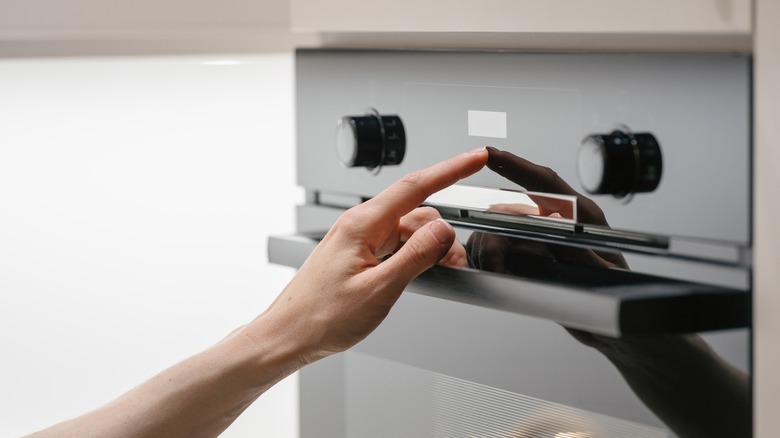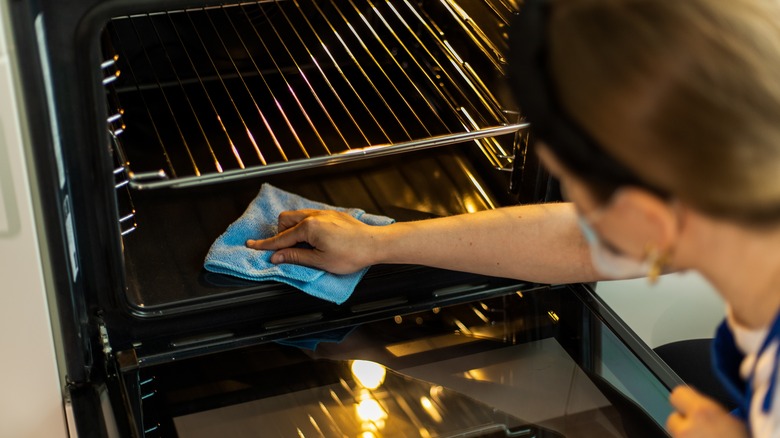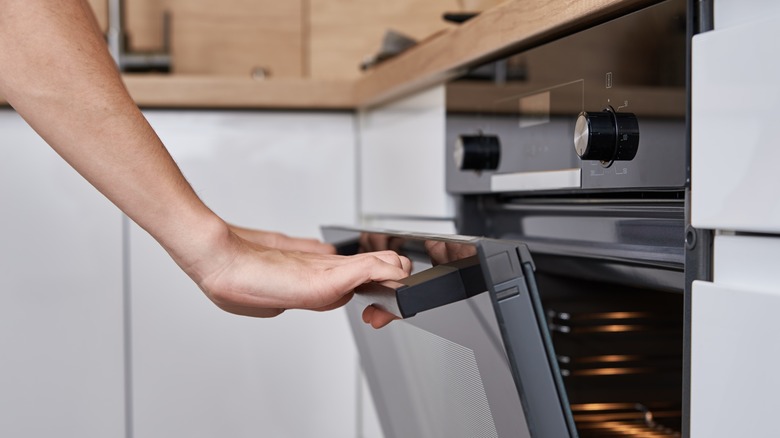Why You Should Avoid Using Your Oven's Self-Cleaning Setting
Whether it be due to oil splatters or leftover food debris, it doesn't take much for an oven to get dirty. When it comes to cleaning it, however, you can't exactly wipe it down and call it a day. That's why the invention of the self-cleaning oven in 1963 was appealing to many homeowners. At the time, people were led to believe that all you had to do was press the self-cleaning button, and all the stuck-on grease and grime would come right off. "It employs electricity to clean soiled ovens to a sparkling cleanliness that looks as if the oven had never been used," a 1963 article in the Daytona Morning Beach Journal claimed.
Unfortunately, that's not quite how self-cleaning ovens worked back then, nor is it today. The truth is, self-cleaning ovens don't really save you as much time as you might think. Though they do loosen baked-on grease, you still technically have to clean it up yourself. On top of that, the self-cleaning function also causes your oven to consume a lot of energy and produce fumes in the process.
What does the self-cleaning mode on an oven actually do?
Contrary to what its name suggests, not much actual cleaning occurs when you press the self-cleaning button on an oven, and the process isn't entirely automatic either. What really happens after you press the button is the oven heats up to temperatures as high as 1,000 degrees Fahrenheit. This heat will break down any grease and grime, so instead of having to scrub it off, you'll be able to wipe away the ash that it turns into.
This may seem a lot simpler than cleaning your oven every three months completely by hand, but what most people fail to realize is that in order for the self-cleaning function to fully work, you also have to pre-clean your oven. The function works best on stubborn residue, which means if you leave behind food bits that don't need a tough scrubbing, it'll just produce an excess of smoke that can otherwise be avoided.
How to safely use the self-cleaning setting
If you have a newer oven, first check to see if the button actually says self-clean or if it says steam-clean instead. Steam-clean ovens, though less effective, tend to be safer because they use 400-degree steam to break down oven buildup instead of 1,000-degree heat. This is an important distinction because it influences how long you can safely run a cleaning cycle.
When an oven is hot enough to turn baked-on food and grease into ash, i.e., at temperatures between 800 and 1,000 degrees Fahrenheit, it's also hot enough to produce carbon monoxide fumes and cancer-causing chemicals including PAHs and HCAs, warns McGill University's Office for Science and Society. If the self-cleaning function is on for an excessive amount of time, you can potentially breath in the harmful fumes produced or even experience symptoms of carbon monoxide poisoning. The safest way to prevent this is to limit your usage to a maximum of one hour rather than the full four manufacturers recommend. It also helps to keep your kitchen well-ventilated, but your best bet is to just avoid using the self-cleaning option altogether.


